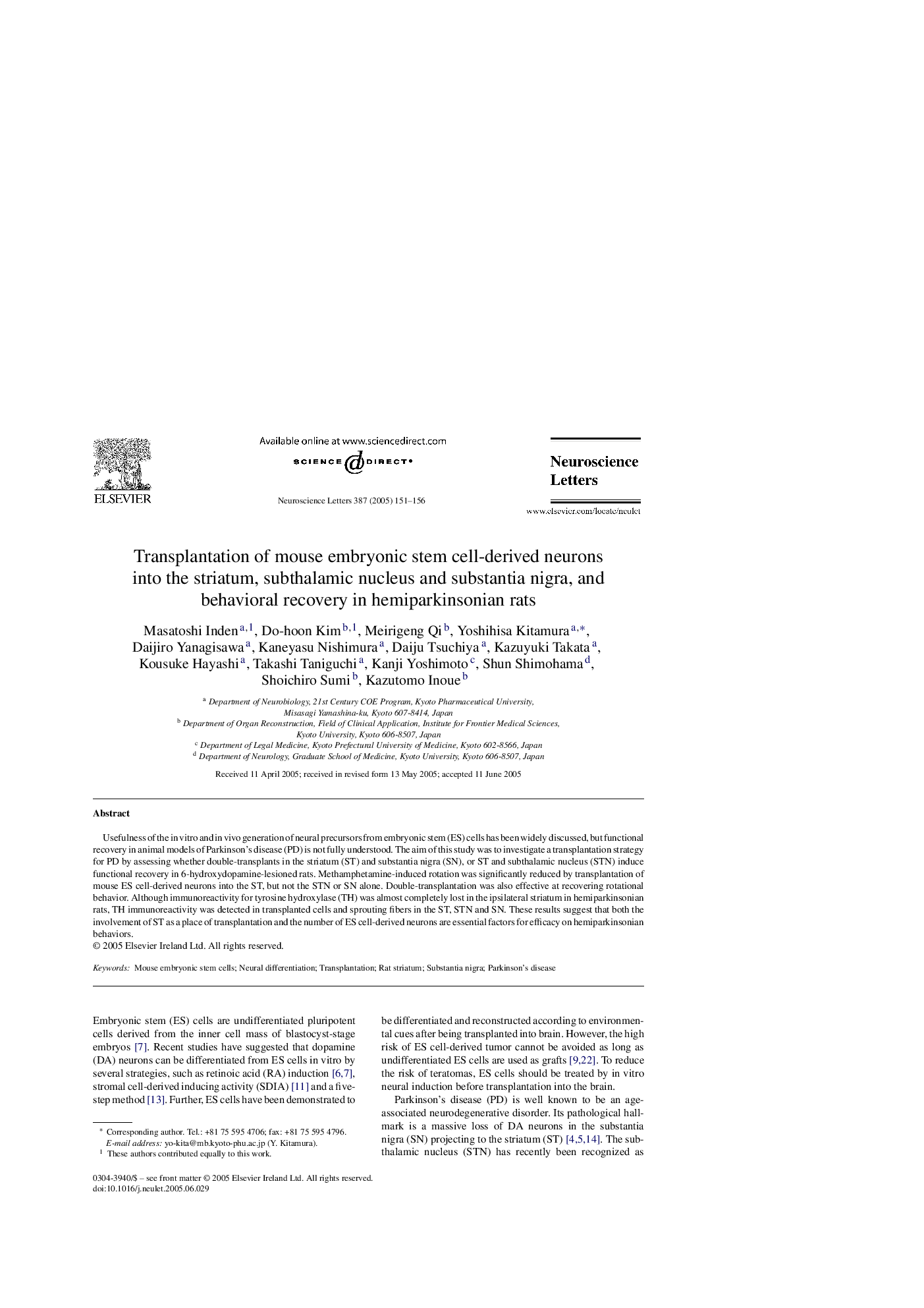| Article ID | Journal | Published Year | Pages | File Type |
|---|---|---|---|---|
| 9428990 | Neuroscience Letters | 2005 | 6 Pages |
Abstract
Usefulness of the in vitro and in vivo generation of neural precursors from embryonic stem (ES) cells has been widely discussed, but functional recovery in animal models of Parkinson's disease (PD) is not fully understood. The aim of this study was to investigate a transplantation strategy for PD by assessing whether double-transplants in the striatum (ST) and substantia nigra (SN), or ST and subthalamic nucleus (STN) induce functional recovery in 6-hydroxydopamine-lesioned rats. Methamphetamine-induced rotation was significantly reduced by transplantation of mouse ES cell-derived neurons into the ST, but not the STN or SN alone. Double-transplantation was also effective at recovering rotational behavior. Although immunoreactivity for tyrosine hydroxylase (TH) was almost completely lost in the ipsilateral striatum in hemiparkinsonian rats, TH immunoreactivity was detected in transplanted cells and sprouting fibers in the ST, STN and SN. These results suggest that both the involvement of ST as a place of transplantation and the number of ES cell-derived neurons are essential factors for efficacy on hemiparkinsonian behaviors.
Keywords
Related Topics
Life Sciences
Neuroscience
Neuroscience (General)
Authors
Masatoshi Inden, Do-hoon Kim, Meirigeng Qi, Yoshihisa Kitamura, Daijiro Yanagisawa, Kaneyasu Nishimura, Daiju Tsuchiya, Kazuyuki Takata, Kousuke Hayashi, Takashi Taniguchi, Kanji Yoshimoto, Shun Shimohama, Shoichiro Sumi, Kazutomo Inoue,
